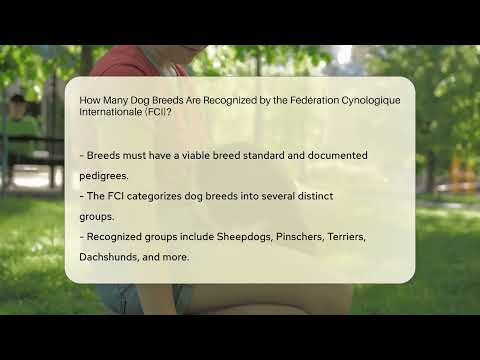
Determining the exact number of dog varieties globally is more complex than it seems. Major kennel clubs, like the FCI and AKC, recognize different totals, with counts ranging from 201 to over 360. These discrepancies arise from varying classification standards and regional preferences.
Beyond officially recognized types, countless rare or local varieties exist. Cultural influences and breeding practices further expand this diversity. Some of these unique canines remain undocumented by major organizations.
The FCI categorizes its 360 recognized varieties into 10 functional groups. This system helps enthusiasts understand their historical roles and characteristics. However, even this extensive list doesn’t capture every existing variation.
Key Takeaways
- Kennel clubs worldwide recognize between 200-360 distinct canine varieties
- The FCI’s classification system organizes breeds into 10 functional groups
- Regional differences affect which types receive official recognition
- Numerous rare or local varieties exist beyond major registries
- Cultural factors influence breeding standards and documentation
Why Counting Dog Breeds Is Complicated
Global canine classification systems rarely align perfectly. Major kennel clubs use conflicting criteria to define a specific breed, leading to wildly different totals. For instance, the FCI prioritizes inheritable characteristics, while the AKC focuses on historical roles.
Varied Definitions of a “Breed”
The FCI considers the Belgian Shepherd one breed with four coat types. Meanwhile, the AKC lists them as four separate different breeds. Similarly, Dachshunds are classified as one breed under the FCI but split into six by the Canadian Kennel Club.
Regional and Cultural Differences
European and American standards often clash. The Australian Shepherd, despite its name, originated in the U.S. Conversely, the Pharaoh Hound is tied to Malta’s heritage. Linguistic nuances further muddy the waters—what’s called a “Cane Corso” in Italy might be labeled an “Italian Mastiff” elsewhere.
| Breed Example | FCI Classification | AKC Classification |
|---|---|---|
| Belgian Shepherd | 1 breed (4 varieties) | 4 separate breeds |
| Dachshund | 1 breed | 6 breeds (by CKC) |
These discrepancies stem from Victorian-era categorization methods clashing with modern genetics. Today’s kennel clubs still grapple with balancing tradition and science.
How Many Dog Breeds Are Recognized Globally?
Breed recognition differs significantly among global kennel organizations. While some registries prioritize historical lineage, others focus on physical traits or regional popularity. This leads to striking disparities in official counts.
The Fédération Cynologique Internationale (FCI): 360 Breeds
The FCI, the largest international registry, acknowledges 360 breeds across 98 countries. These are divided into 10 functional groups, including Sighthounds and Primitive Types. France, Germany, and the UK developed over 60% of these varieties.
The American Kennel Club (AKC): 201 Breeds
In contrast, the American Kennel Club recognizes only 201. Its slower approval process requires documented breed history and a stable population. The AKC’s 7-group system reflects working roles rather than genetic lineages.
Other Kennel Clubs and Their Counts
Smaller registries add further complexity. The Indian National Kennel Club lists rare types like the Mudhol Hound. Meanwhile, platforms like Good Dog track 350+ varieties with active U.S. breeders. Experimental breeds, such as the Silken Windhound, await full recognition.
Major Kennel Clubs and Their Recognized Breeds
Official recognition of canine varieties hinges on regional and organizational criteria. Each registry prioritizes distinct traits, from historical roles to physical standards, creating fragmented global lists.
FCI: The Largest International Registry
The Fédération Cynologique Internationale (FCI) governs breed standards across 98 countries. It recognizes 360 breeds, assigning origins like Spain’s Pyrenean Mastiff or Central Africa’s Basenji. These are sorted into 10 functional groups, from herding to companion types.
AKC: The US Standard
America’s kennel club (AKC) maintains a stricter 201-breed list. Since 2014, 23 new varieties joined, including the Biewer Terrier. Its 7-group system, last updated in 1984, emphasizes working roles over lineage.
“The AKC’s approval process requires decades of documented history and a stable population,” notes a breed historian.
The Kennel Club (UK) and United Kennel Club (UKC)
Britain’s Kennel Club lists 222 breeds, while the UKC—focused on performance—tracks 376. The UKC uniquely classifies “Pariah dogs” like the Carolina Dog. Emerging clubs, such as the ARBA, spotlight rare types like the Tibetan Mastiff.
- FCI: Ties breeds to countries of origin (e.g., Pharaoh Hound to Malta).
- AKC: Slow to add breeds; the Dogo Argentino waited 27 years for recognition.
- UKC: Prioritizes versatility, with breeds like the Treeing Walker Coonhound.
National clubs also drive preservation efforts, safeguarding local treasures like the Xoloitzcuintli.
The 7 Dog Breed Classifications

Kennel clubs categorize canines into distinct groups based on historical roles and traits. This system helps enthusiasts understand breed purposes, from ancient working companions to modern urban pets. The group includes everything from powerful guardians to miniature lap dogs.
Working Dogs
Built for strength and endurance, these varieties excel at guarding and pulling. The group includes Siberian Huskies and Saint Bernards. Originally bred for tasks like sled-pulling and rescue work, they remain popular for active families.
Sporting Dogs
Developed for hunting assistance, these energetic companions specialize in flushing and retrieving. Examples span from Labrador Retrievers to English Setters. Their intelligence makes them excellent service animals today.
Non-Sporting Dogs
This diverse category acts as a catch-all for breeds without a specific working role. The group includes Dalmatians, French Bulldogs, and Poodles. Temperaments vary widely across these companion-oriented canines.
Herding Dogs
Bred to control livestock, these intelligent varieties like Border Collies and German Shepherds thrive on mental stimulation. The FCI separates them from working dogs, while the AKC combines both categories.
Terrier Dogs
Originally vermin hunters, terriers divide into earth types (digging) and bull breeds (combat). Jack Russell Terriers exemplify the former, while Staffordshires represent the latter. Their feisty personalities require experienced owners.
Hound Dogs
Specialized hunters use either scent (Bloodhounds) or sight (Greyhounds). The FCI splits these into two separate groups, while the AKC combines them. Their strong prey drive demands secure containment.
Toy Dogs
Bred for companionship, these miniature varieties like Chihuahuas and Pomeranians suit urban living. Selective breeding for size sometimes creates health challenges, requiring careful veterinary care.
| Group | AKC Examples | FCI Equivalent |
|---|---|---|
| Working | Boxer, Great Dane | Group 2 (Pinscher/Schnauzer) |
| Herding | Australian Shepherd | Group 1 (Sheepdogs) |
| Terrier | Scottish Terrier | Group 3 (Terriers) |
| Hound | Beagle | Groups 6 & 10 (Scent/Sight) |
Understanding these classifications helps potential owners select pets matching their lifestyle. Regional kennel clubs may further refine these categories based on local preferences.
How a Dog Breed Gains Official Recognition
Earning official status as a recognized breed involves a rigorous, multi-step process. Kennel clubs worldwide enforce strict criteria to ensure consistency and health standards. This safeguards breed integrity while acknowledging historical and cultural significance.
AKC’s Strict Requirements
The American Kennel Club mandates four phases for full recognition. First, breeds enter the Foundation Stock Service (FSS), requiring documented lineage and a stable population. Next, they advance to the Miscellaneous Class, like the Biewer Terrier did in 2021.
Final approval demands 300–400 dogs across 20+ U.S. states. The Eurasier, despite its European popularity, awaits AKC approval after 15+ years. Costs exceed $10,000 for genetic testing and breed standard development.
The Role of National Breed Clubs
Local clubs advocate for recognition by submitting detailed histories and trait documentation. For example, the Peruvian Inca Orchid’s club has petitioned the AKC since 1996. These groups also address health concerns, like hip dysplasia in larger varieties.
The Miscellaneous Class Pathway
This transitional stage allows breeds to compete in limited AKC events. It accelerates visibility while final reviews occur. The foundation stock service tracks progress, ensuring genetic diversity meets thresholds.
- Phase 1: FSS enrollment with pedigree verification
- Phase 2: Miscellaneous Class eligibility (1+ years)
- Phase 3: Breed standard ratification
- Phase 4: Full recognition and group assignment
“The AKC’s process prioritizes breed health over speed,” notes a spokesperson. “Rushed approvals risk perpetuating genetic issues.”
Internationally, the FCI and UKC follow similar steps but with regional adaptations. The UKC’s performance-based system often recognizes working breeds faster than the AKC. Meanwhile, the FCI defers to country-of-origin clubs for standard definitions.
Conclusion
Canine diversity continues to evolve globally, making exact counts fluid. Estimates range from 360 to 500+ potential dog breeds, with registries constantly reassessing standards. Emerging trends prioritize health-focused breeding over traditional aesthetics.
Enthusiasts can explore rare breeds through reputable kennel clubs or genetic databases. The exact number remains debated, but innovation ensures fresh varieties enter recognition pipelines yearly.
From ancient lineages to modern hybrids, the world of canines thrives on change. This dynamic nature guarantees ongoing discoveries for future generations.



